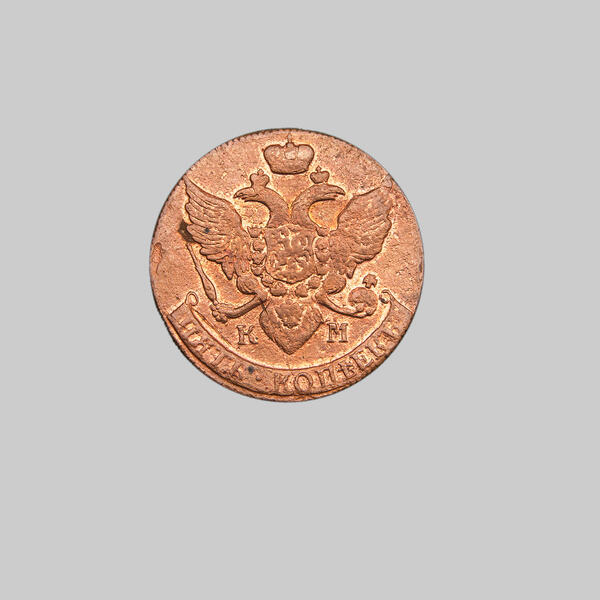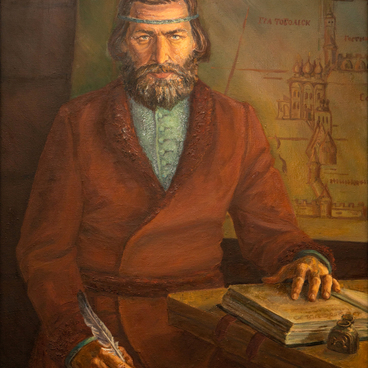The history of the copper coin goes back to Ekaterinburg. It began on June 14, 1725, when a Senate decree was adopted: ‘… At Siberian factories, to make coins from finished products, and which will henceforth be melted, to make planchets from pure red copper, to label the price in the middle and on each edge - a coat of arms with thread marks of different values, namely — rouble, poltina, half a poltina, and grivna…’.
Hence, in the Russian Empire there was a ‘money yard’ — an enterprise for the production of coins, where Swedish-style money was minted. Then they were square-shaped and were issued in a pile of 10 roubles from a pood of metal with denominations of 1.5 kopecks, grivna (ten kopecks), half a poltina (25 kopecks), poltina (50 kopecks) and a rouble. Such coins were inconvenient to handle, and the population used them unwillingly and for a short time. Therefore, the yard was renamed the mint, where they began to produce first planchets, and later coins. It was the largest plant for the production of copper coins in the Empire.
When Empress Catherine II ascended to the Russian throne in 1762, the mint was renamed into the Ekaterinburg mint. Since that time, coins minted in Ekaterinburg had their own unique designation ‘E.M.’ — the Ekaterinburg coin.
A coin from the Tobolsk Museum Reserve with a face value of 5 kopecks was issued in 1790, it was in circulation during the reign of Catherine II – in 1762-1796. The imperial monogram is depicted on its front side, made up of the letter ‘E’ (Ekaterina (Catherine)), the Latin letter ‘J’ (Empress) and the Roman figure ‘II’. There is the Imperial crown above the monogram with laurel and palm branches on the sides tied with a ribbon. The reverse side of the coin shows the state emblem — a double-headed eagle with three Imperial crowns, on the chest — the coat of arms of the city of Moscow, and on its wings — a chain with the medal of St. Andrew. He holds a scepter and an orb in its paws. In the lower part of the coin on the ribbon, the denomination ‘five kopecks’ is indicated. By 1796, almost three-quarters of all copper coins of the Russian Empire had been minted in Ekaterinburg.
Hence, in the Russian Empire there was a ‘money yard’ — an enterprise for the production of coins, where Swedish-style money was minted. Then they were square-shaped and were issued in a pile of 10 roubles from a pood of metal with denominations of 1.5 kopecks, grivna (ten kopecks), half a poltina (25 kopecks), poltina (50 kopecks) and a rouble. Such coins were inconvenient to handle, and the population used them unwillingly and for a short time. Therefore, the yard was renamed the mint, where they began to produce first planchets, and later coins. It was the largest plant for the production of copper coins in the Empire.
When Empress Catherine II ascended to the Russian throne in 1762, the mint was renamed into the Ekaterinburg mint. Since that time, coins minted in Ekaterinburg had their own unique designation ‘E.M.’ — the Ekaterinburg coin.
A coin from the Tobolsk Museum Reserve with a face value of 5 kopecks was issued in 1790, it was in circulation during the reign of Catherine II – in 1762-1796. The imperial monogram is depicted on its front side, made up of the letter ‘E’ (Ekaterina (Catherine)), the Latin letter ‘J’ (Empress) and the Roman figure ‘II’. There is the Imperial crown above the monogram with laurel and palm branches on the sides tied with a ribbon. The reverse side of the coin shows the state emblem — a double-headed eagle with three Imperial crowns, on the chest — the coat of arms of the city of Moscow, and on its wings — a chain with the medal of St. Andrew. He holds a scepter and an orb in its paws. In the lower part of the coin on the ribbon, the denomination ‘five kopecks’ is indicated. By 1796, almost three-quarters of all copper coins of the Russian Empire had been minted in Ekaterinburg.



